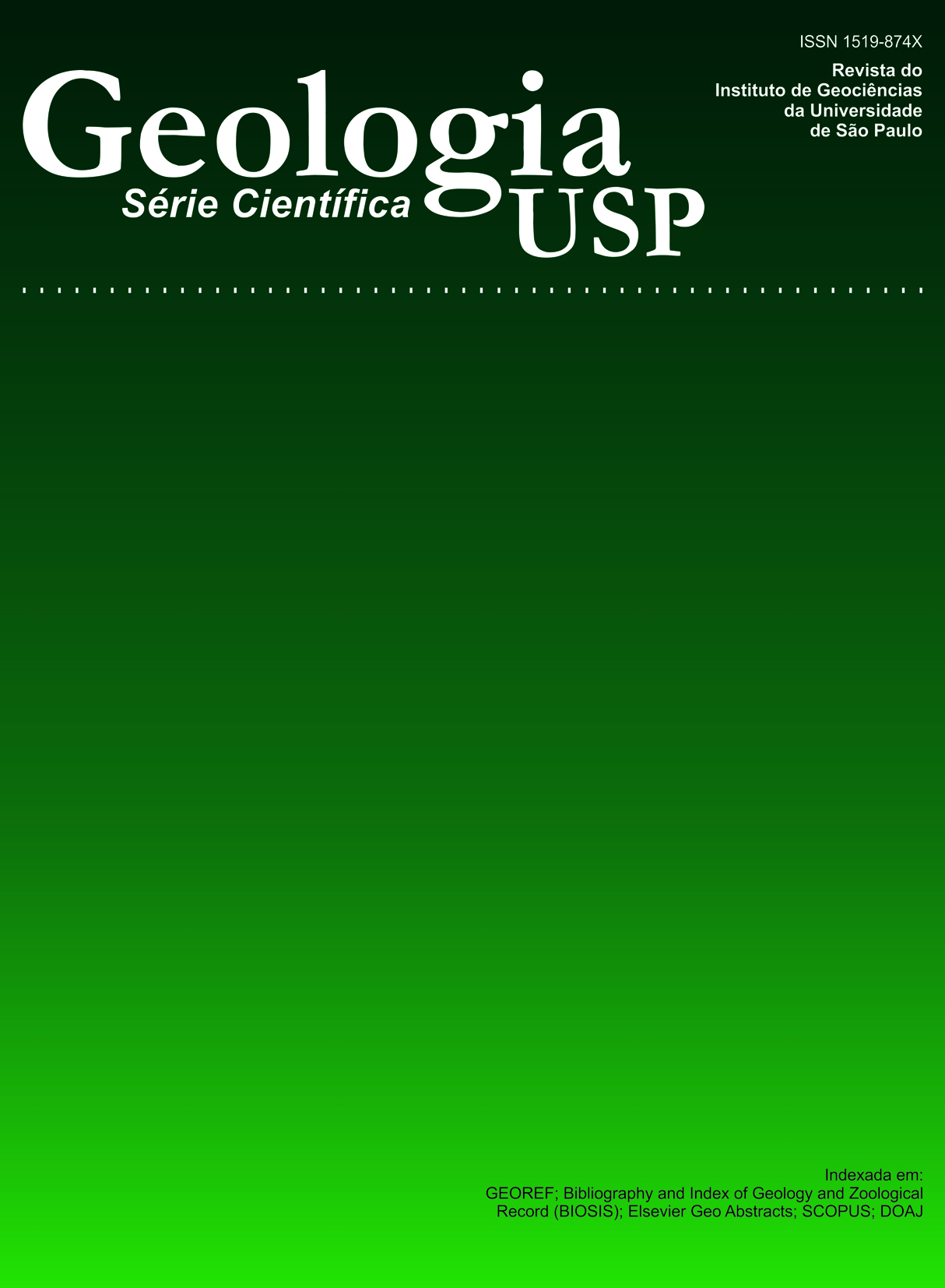Extensional and colisional magmatic records in the Apiaí Terrane, south-southeastern Brazil: integration of geochronological U-PB Zircon ages
DOI:
https://doi.org/10.5327/Z1519-874X2011000300009Keywords:
Apiaí Terrane, Records of Paleo (1790 - 1.750 Ma) to Mesoproterozoic (1600 - 1.450 Ma), Records of lowerupper Neoproterozoic (1030 - 900 and 645 - 630 Ma), Cyclic crustal evolution, Integration of geochronological dataAbstract
The aim of this work is the presentation of a synthesis of available geochronological data for the basement inliers and metavolcano-sedimentary sequences which occur in the southern part of the Apiaí Terrane, south-southeastern Brazil. These data, especially those obtained during the last decade, have made substantial modifications to the tectonic scenario of south-southeastern Brazil with the recognition of the presence of extensional basins (continental rifts) with magmatism and sedimentation at the late Paleoproterozoic (1790 - 1750 Ma) and of the Mesoproterozoic (1600 - 1450 Ma). These processes started at the late Paleoproterozoic in the Betara, Perau and Apiai Mirim Nuclei, and the basins became widerduring the Mesoproterozoic with the deposition of the Betara, Perau, Votuverava and Água Clara metavolcano-sedimentary sequences. A different pattern is found for the Itaicoca Sequence which occupies the northern part of the Apiaí Terrain. Here two rock associations of different ages are found. The first is a metamorphosed carbonate platform association with subalkaline, tholeiitic metabasic rocks with minimum deposition ages at the end of the Mesoproterozoic or beginning of the Neoproterozoic (Itaiacoca Sequence; 1030 - 900 Ma), while the second mainly contains metapsammites and metavolcanic rocks including ultrapotassic trachytes deposited during the Cryogenian-Ediacaran transition between 645 and 628 Ma (Abapã Sequence). It is then proposed that the present scenario of the Apiaí Terrane be representative of the distinct tectono-sedimentary histories, reflecting a polycyclic evolution. In the Mesoproterozoic, stable conditions prevailed, withthe deposition of the majority of the sequences (Lajeado, Água Clara, Betara, Perau, Votuverava) in a passive margin context, succeded by a Tonian extensional phase (deposition of the Itaiacoca Sequence). In the Ediacaran the region was transformed into an unstable active margin, with the predominance of magmatic arcs (Três Córregos, Cunhaporanga and Agudos Grandes) and restricted sedimentation (Abapã, Antinha and Iporanga Sequences).Downloads
Download data is not yet available.
Downloads
Published
2011-12-01
Issue
Section
Articles
License
Authors who publish in this journal shall comply with the following terms:
- Authors keep their copyright and grant to Geologia USP: Série Científica the right of first publication, with the paper under the Creative Commons BY-NC-SA license (summary of the license: https://creativecommons.org/licenses/by-nc-sa/4.0 | full text of the license: https://creativecommons.org/licenses/by-nc-sa/4.0/legalcode) that allows the non-commercial sharing of the paper and granting the proper copyrights of the first publication in this journal.
- Authors are authorized to take additional contracts separately, for non-exclusive distribution of the version of the paper published in this journal (publish in institutional repository or as a book chapter), granting the proper copyrights of first publication in this journal.
- Authors are allowed and encouraged to publish and distribute their paper online (in institutional repositories or their personal page) at any point before or during the editorial process, since this can generate productive changes as well as increase the impact and citation of the published paper (See The effect of Open Access and downloads on citation impact).
How to Cite
Siga Junior, O., Basei, M. A. S., Nutman, A., Sato, K., McReath, I., Passarelli, C. R., & Liu, D. (2011). Extensional and colisional magmatic records in the Apiaí Terrane, south-southeastern Brazil: integration of geochronological U-PB Zircon ages . Geologia USP. Série Científica, 11(3), 149-175. https://doi.org/10.5327/Z1519-874X2011000300009





